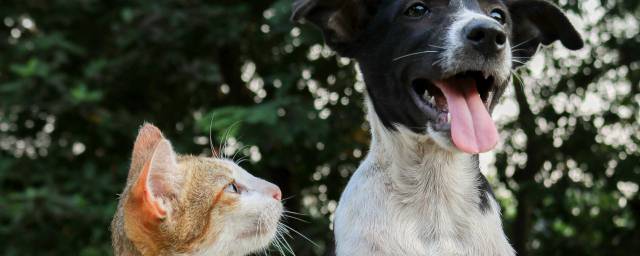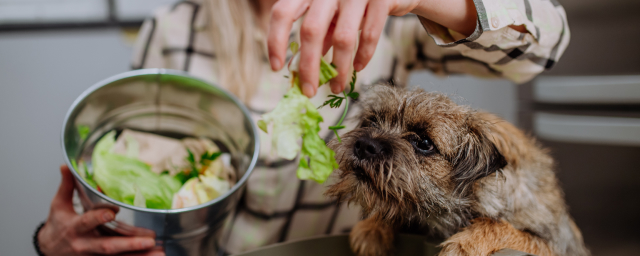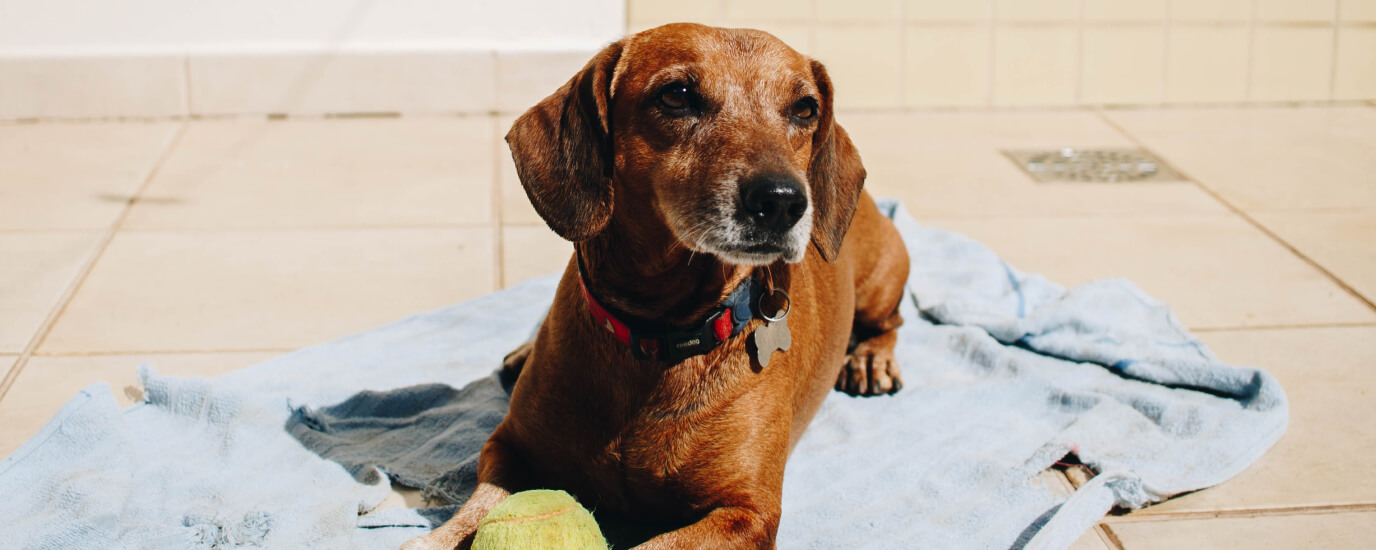
How to Calm a Dog Down in 6 Simple Steps
Dogs are high-energy creatures with unique personalities. Add food, treats, and toys to the mix, and they can become even more energetic. But, an overly hyper dog can cause other problems if they aren’t able to calm down when it matters most.
It may seem easy to keep your dog calm in your own home or safe place. But, sometimes pet parents and their pets can find themselves in unforeseen circumstances. Knowing the steps to keep your dog calm in stressful moments will help you keep them safe.
In this article, we'll cover some important points about calming your pet including:
- 3 types of dog anxiety
- 4 anxious behaviors pet parents should look for
- How to calm a dog down
3 types of dog anxiety

Dog anxiety is a normal, healthy emotion that can show up in many ways. It usually depends on your pet’s environment, background, and general health and well-being.
In fact, pet parents often mistake symptoms of anxiety and stress in dogs for excitement. When dogs bark, jump, pant excessively, or shred toys it could signal that they are feeling anxious or stressed out.
Shelter dogs are typically very anxious because their routine is constantly changing. But, anxiety can occur in dogs from any background.
Here are three reasons your dog may be anxious.
1. Generalized anxiety

According to a study by Science.org, over 70% of dogs show at least one anxiety-related behavior. This is why generalized anxiety is a common anxiety disorder and often goes unnoticed (even in a happy dog).
Noise sensitivity was the most common trigger across all breeds. Dogs with general anxiety may have symptoms or tendencies like:
- Difficulty focusing
- Poor social skills
- Being slow to learn commands
The cause of general anxiety in dogs varies from one dog to the next. Your dog’s physical wellness, environment, and mental state are common causes of general anxiety. Other common causes of general anxiety include:
- Loud noises
- Sudden changes in your pet’s environment
- Adding (or removing) new people in your pet’s life
- Unfamiliar environments
2. Situational anxiety

Situational anxiety occurs when your dog experiences unusual situations. There are a number of triggers that can cause situational anxiety in your pet like:
- New environments
- Social situations
- Vet visits
- Car rides
- Fireworks and storms
- Loud noises
In some regions, dog parents have started bringing their canine companions along to restaurants, dog bars, parks, and grocery stores. This may not be a good option for your dog if they experience stress in new environments.
Triggers can prevent your dog from calming down. If your dog often feels anxious in specific settings or situations, they may suffer from situational anxiety.
3. Separation anxiety

Lots of pet owners brought home new puppies during the COVID-19 pandemic. These “pandemic puppies” grew up with their owners at home with them all day, every day. Since the world opened back up, our pets were left at home again for long periods of time.
Separation anxiety often shows up in dogs who have gotten comfortable with having their humans around 24/7. Dogs suffering from separation anxiety can start feeling anxious when you leave them alone for long periods of time.
4 anxious behaviors pet parents should look for

Every dog handles stress and anxiety in different ways. Here are some signs of generalized anxiety:
1. Food refusal
If your dog has anxiety, they might refuse food or treats. This can be for a variety of reasons, but similar to humans, when anxiety takes over it can cause stomach upset and nausea.
To combat this issue dog owners can try:
- Finding a different food for your dog
- Adding water to their food
- Hand-feeding your dog
Refusing food can also be a sign of physical pain or illness. Visit your veterinarian if your dog suddenly refuses their meals.
2. Destructive behavior
Dogs with separation anxiety may resort to destructive behaviors in moments of intense anxiety during departures or separations.
Examples of destructive behaviors in dogs include:
- Excessive chewing or licking
- Gnawing on furniture or other household items
- Defecating in the house
It can take time for your dog to unlearn destructive behaviors, especially if they are related to separation. So, getting on top of these behaviors is important. Some dogs may need long-term medications and training before they are comfortable on their own.
3. Aggression
Dogs that have aggressive behaviors are not always mean or bad dogs. Oftentimes, their behavior stems from anxiety. They are likely scared or fearful about their current situation and are trying to protect themselves.
Anxiety-related aggression is a common form of dog anxiety. If your dog has a fear of other animals, they might exhibit aggressive behaviors or offensive body language.
Aggressive behaviors can be a result of your dog's anxiety and can be shown in different forms, including:
- Growling
- Snarling
- Barking
- Lunging
- Snapping
- Biting
4. Pent up energy
Sometimes your dog may act out because they have too much energy. Regular exercise can help them relax and keep them calm while you're away. Especially when you exercise them before times of separation.
To avoid reinforcing hyper behavior in your dog, avoid eye contact while your pet is acting out. Dogs love attention and eye contact makes your pup feel validated.
You can also show your dog you aren't interested in their behavior with your body language. Turning away from your dog when they are acting out can show them you don't agree with their actions.
How to calm down an anxious dog
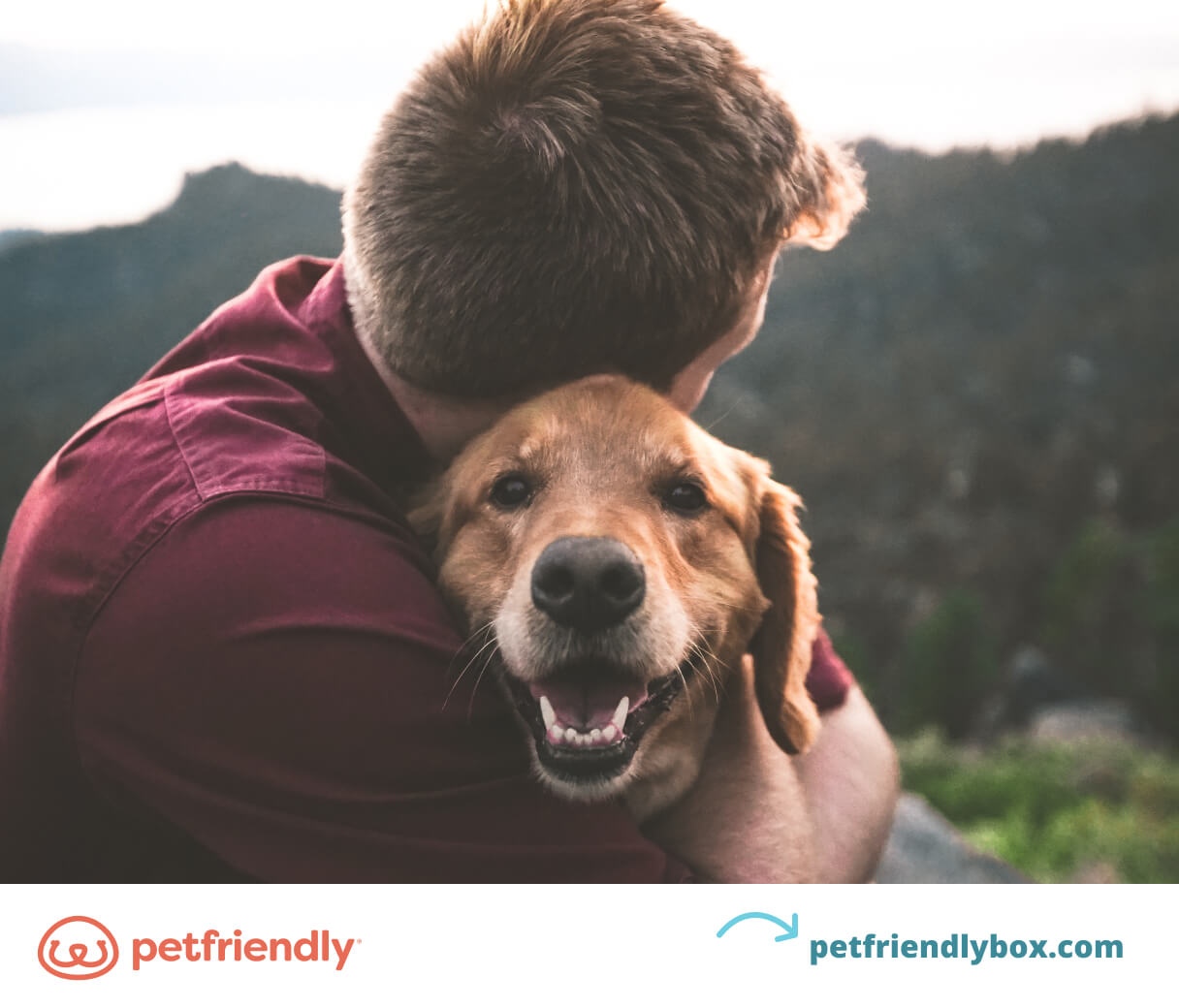
There are many treatment options for dogs' anxiety. Once you discover the source of your dog's anxiety, you can take steps to help them feel safe.
Here are some helpful methods to help calm your dog's anxiety.
1. Use calming medicine for dogs.#

Anti-anxiety medication is commonly used for dogs suffering from moderate to severe anxiety. But, every dog is different. Some dogs don't need dog anxiety medications forever, while other dogs benefit from lifelong treatment.
Common anxiety medications for dogs include:
- Alprazolam (Xanax)
- Amitriptyline
- Buspirone
- Clomipramine (Clomicalm)
- Dexmedetomidine (Sileo)
- Diazepam (Valium)
- Fluoxetine (Prozac)
- Lorazepam (Ativan)
- Paroxetine (Paxil)
- Sertraline (Zoloft)
2. Explore natural calming products.

You might think that prescription anxiety medication is necessary to treat anxiety. But, there are many natural products, supplements, and remedies that can help soothe a scared dog.
Here are some beneficial treatments you can give your pup for stress and anxiety without using medication.
Calming dog treats
Treats with calming ingredients, also known as nutraceuticals, are safe to give your dog to help soothe symptoms of anxiety. Common ingredients found in these treats include:
- Cannabidiol (CBD) is a compound found in hemp that some dog owners use to treat stress, anxiety, and pain in dogs. It can also be helpful for sleep regulation in puppies.
- L-tryptophan can help reduce stress and aggression in your dog. This amino acid is found in many proteins and is a common ingredient in calming treats for dogs.
- L-theanine is another safe amino acid for dogs of all sizes. This amino acid is used as an alternative to prescription anxiety medications like Xanax, Prozac, and Valium.
- Melatonin’s sedative properties can be helpful in treating your dog's separation anxiety. Melatonin is available over-the-counter, but you should always talk to your veterinarian before giving your dog melatonin.
- Passionflower is a perennial vine best known for its natural calming properties. Passionflower is safe for dogs and is a common treatment for anxiety.
- Valerian root is an herbal supplement with mild sedative properties. It can be used to treat anxiety and improve sleep. This herb may also help treat fear of noise and separation anxiety.
VET TIP
CBD oil isn't the same from one type to the next. And, valerian root is not safe for puppies, pregnant dogs, or dogs with underlying health conditions. Talk to your veterinarian before giving your pup a natural medication to calm them down.
3. Play calming music for your dog.#
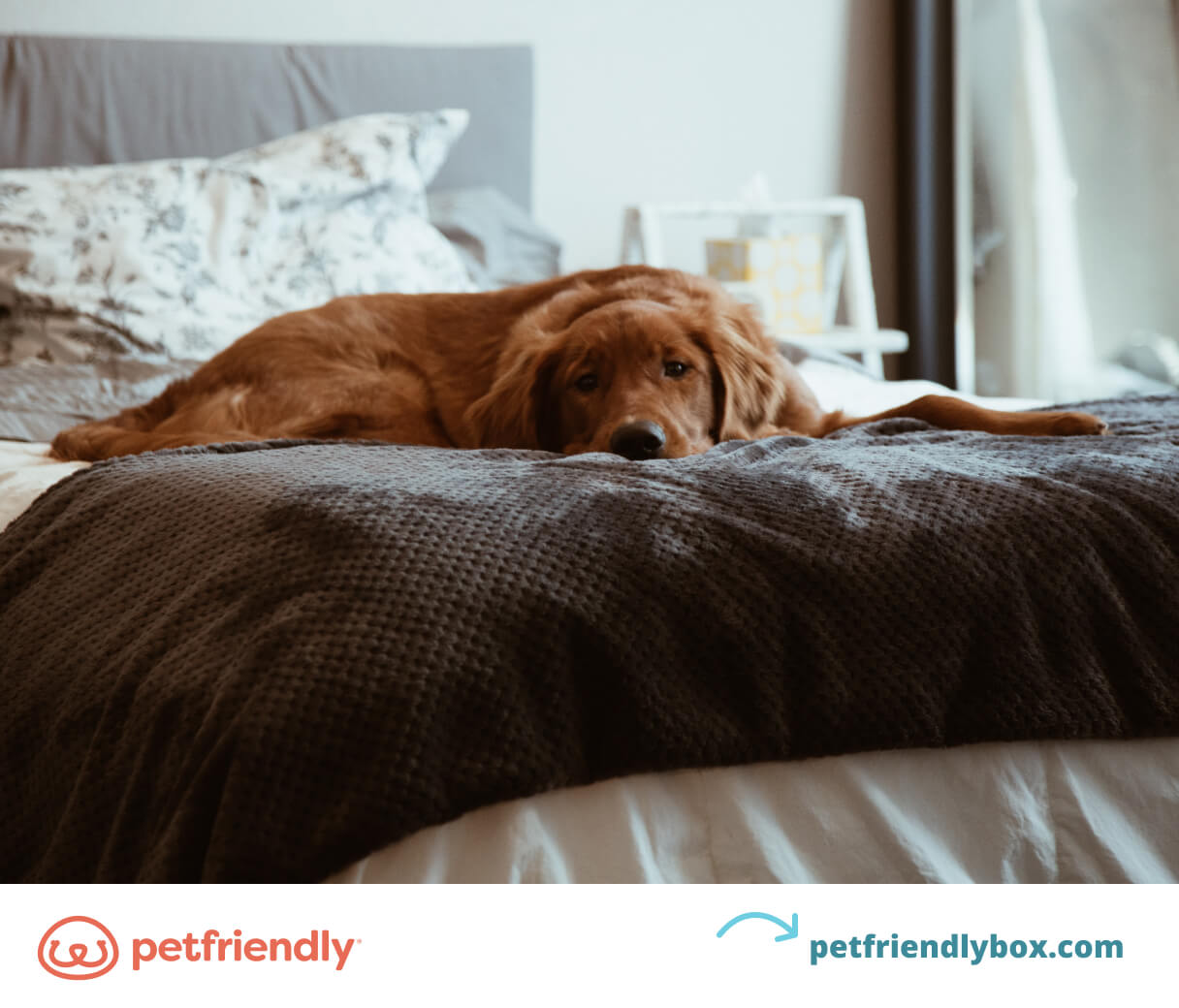
Like humans, dogs are affected by the tonal quality, beat, and melody of music. This is why music therapy or using a white noise machine are great ways to treat anxiety in your dog.
Dogs can benefit from music therapy and calming sounds like:
- Classical music
- Rain sounds
- White noise
Using a white noise machine or playing music can be helpful if you live in a noisy area. These tools can help your dog feel less scared.
4. Implement special training for anxious dogs.#

In addition to some form of anxiety medication, you may need to incorporate special exercises into your dog's training. This can help your dog become more confident and feel positive in the future. Exposing your dog to triggers at a safe level is the first step.
This training method is known as desensitization. If your dog's fear is loud noise from a vacuum, train your dog to feel comfortable around it. Let them sniff the vacuum or be in the same room as the vacuum while it's turned off.
Once your dog is comfortable at this level, you can begin introducing the sound of the vacuum in your house. Reinforce calm behavior with treats.
This type of trick training takes time and practice. So, be patient and persistent when introducing new things into your dog's life.
5. Try calming coats.
Weighted vests, coats, and t-shirts are recommended for dogs with situational anxiety. The tactile, constant pressure on your dog's torso provides a calming aid that reminds them of their mom.
Calming coats can help calm them down by providing a layer of protection. Vests or backpacks can also be weighted to make dogs feel like they have a job to do to shift focus from their phobias.
6. Spend quality time with your pet.
If you’ve gone back to work following the pandemic, spending time with your pet is even more important. Don’t forget about the power of an owner's touch and eye contact.
Spending time with your pet can help temporarily resolve stress symptoms and keep them calm. You can comfort them by petting them, brushing their fur, or simply being near them.
Try out enrichment toys to stimulate and exercise your puppy's brain. These types of toys are a great option before you leave them at home for a period of time.
Keeping your dog calm in stressful situations is an important skill for pet owners. Whether you use anxiety medication or music therapy, be confident in knowing that calm dogs are happy dogs.
Calming a new puppy starts with having all the supplies to be prepared. Check out our new dog checklist to make sure you have everything you need.
READ MORE